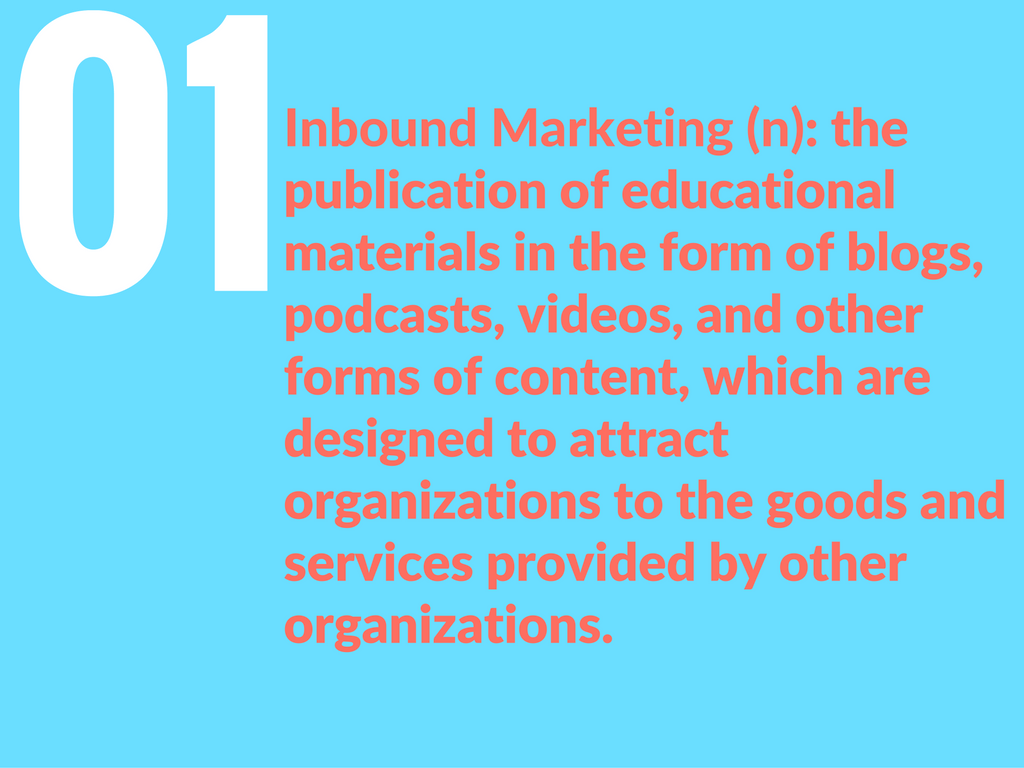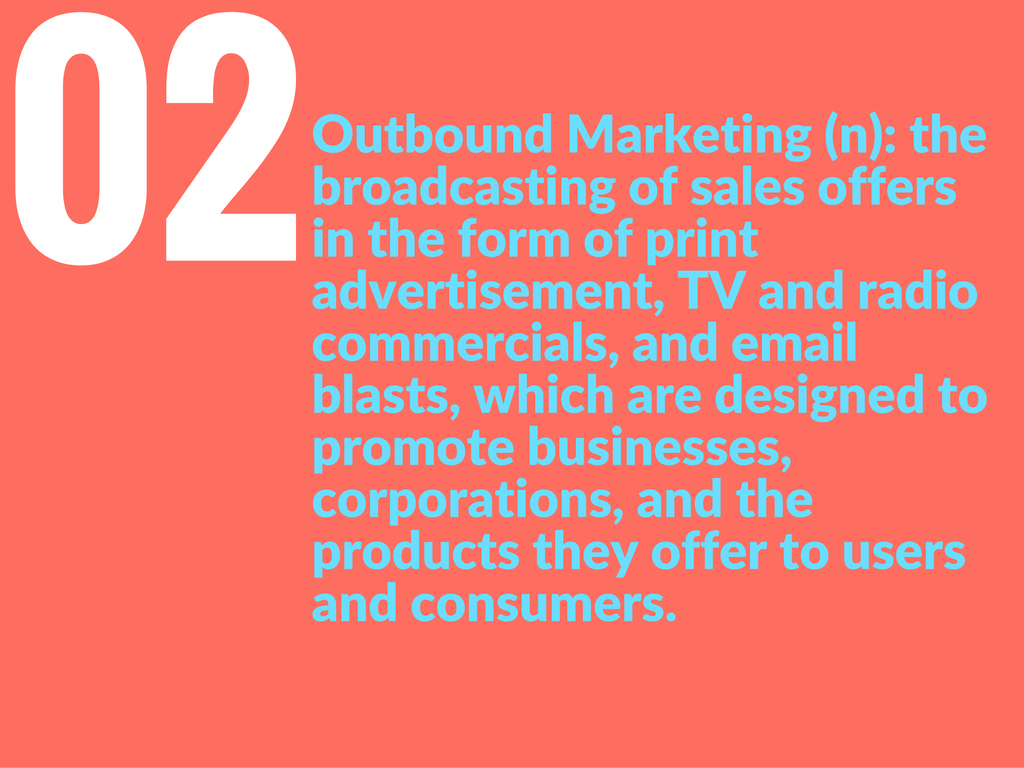What’s the Difference between Inbound Marketing and Outbound Marketing?
Although the line that professional marketers have drawn in the sand is increasingly disappearing, the difference between inbound marketing and outbound marketing could almost be described as the difference in conversion strategies between paid content marketing and display banner advertising. That description may be in the right ballpark, but it only lands us on first base.
There are in fact a myriad of differences between inbound and outbound marketing (of which differing conversion strategies are only one small part), differences which even the most celebrated thought leaders among us are sometimes guilty of boiling down to the timeworn distinction between “old” and “new”.” Such comparisons may be helpful to digital marketers young and old who want to believe in the goodness of their profession, but they rarely move the ball forward for the rest of the marketing world.
When regarded more closely, the relationship between these two marketing methods is more complicated, albeit only slightly so, but their shared complexity is why we’ve dedicated this post to explaining the relationship between inbound and outbound marketing in terms that marketers of all stripes are likely to hear and use in everyday conversation: Conversion Strategies, Target Audiences, and Offers. We recognize the versus terminology that we employ to describe this relationship may appear to set off an oppositional relationship; it is not intended to do so. It is more intended to set up a spectrum along which any marketer’s inbound or outbound tactics may be deemed to fall, whether they be deployed for content strategy, an email marketing campaign, or the design of an advertisement—or, perhaps most effectively, all three.



1. Conversion Strategy: Attraction versus Promotion
The motivational force behind attraction is a pull. The motivational force behind promotion is a push.
When marketers adopt inbound conversion strategies such as content publication, they want to gently pull users and consumers in their general direction, converting with an attractive offer. When they opt for outbound marketing strategies such as banner advertisements, they want to gently push users and consumers along a predefined path, converting with a promotional offer. A standard inbound conversion strategy will more often reach for indirect methods of persuasion (like branded infographics or ethical product placement) than a standard outbound conversion strategy, which will more often cut to the chase and make a direct offer, like a “buy-one-get-one-free” promotion, discount, or other type of financial incentive. The best marketers are often able to blend these two conversion strategies, perhaps opting first to gently push an outbound promotion to raise awareness of a free offer, and then placing additional, ethically attractive information along the path toward accepting the original offer, information which is designed to gently pull the user or consumer toward accepting an additional offer and developing enough loyalty to become a paying customer. In fact, many successful software as a service (SaaS) companies, including LinkedIn, Ancestry, and the popular buzzword search tool, BuzzSumo, use this exact conversion funnel strategy to grow their customer bases.FEATURED ONLINE PROGRAMS
-
>Master’s in Marketing Communications
The Marketing Communication master’s concentration prompts you to analyze consumer behavior, conduct market research, and engage the power of brands and messages in order to develop powerful digital marketing strategies. Evaluate various tactics, measure their effectiveness, and explore the intricacies of working with or in complex, multi-functional teams to execute compelling marketing campaigns. Highlights:
- Top 100 university
- 100% online
- No GRE
SPONSORED
2. Target Audience: Business-to-Business versus Business-to-Consumer
The art of targeted business messaging lies in the science of research. The art of targeted consumer messaging lies in the science of even more research.
Finding the right audience can be one of the hardest parts of marketing. Diehard proponents of inbound marketing strategies would probably tell us that’s why we should allow our ideal audience to find us, while diehard advocates of outbound marketing strategy would probably tell us that’s why we construct ideal audience personas: to target those we suppose would be most interested in what we have to offer. The assumption underlying both suggestions is that business audiences will naturally gravitate toward subtle, inbound messaging since they are constantly searching to improve their business, whereas consumer audiences require a more robust, outbound message, since they are a more passive bunch. Where strategists who gravitate toward one approach more than the other tend to miss the mark is by overlooking the art and science of research—that is, listening rather than pushing new ads and pulling new leads. Some of the best marketing strategies are born from long stints of research and development, stints which culminate in the creation of the most relevant message reaching its most relevant audience. It’s often easier to research a business than it is to research a consumer. After all, there are less businesses on the planet than consumers, and consumers tend to change their preferences more frequently than entire businesses. But taking the time to listen to an audience and shape our message around their proven needs and desires can offer a much more lucrative payoff than leaving a trail of breadcrumbs or shouting into the void. As market research has shown, marketers for both business-to-business and business-to-consumer companies can make good use of Facebook analytics to discover and monitor new target markets.

